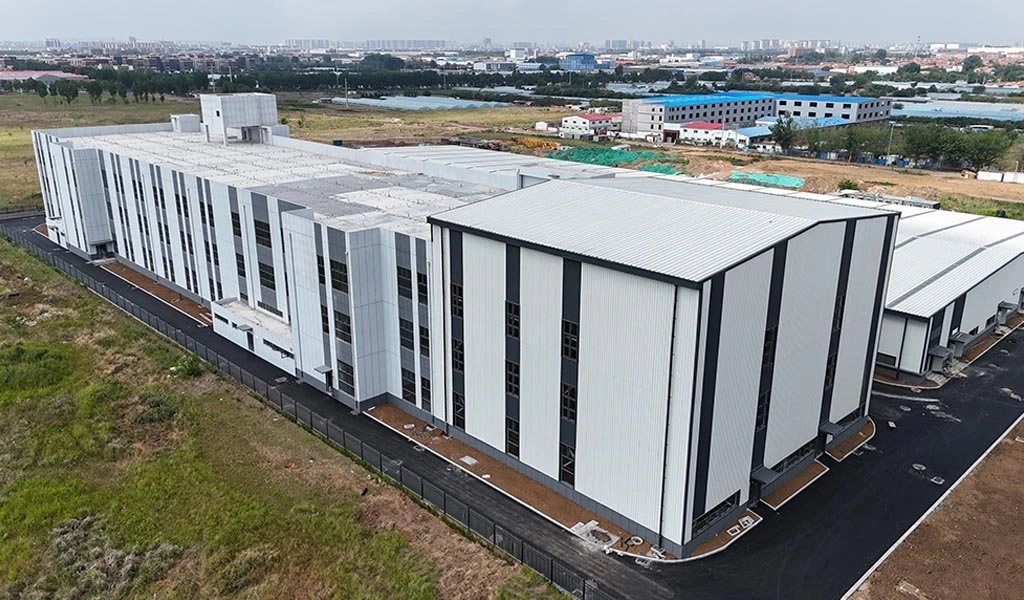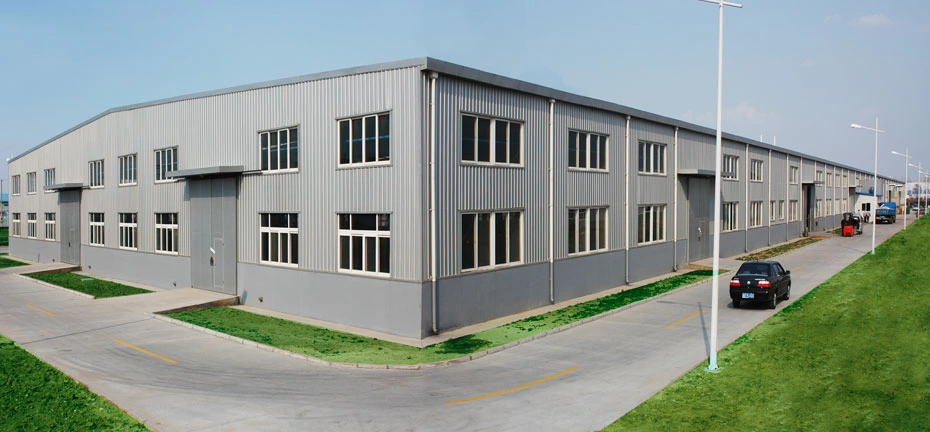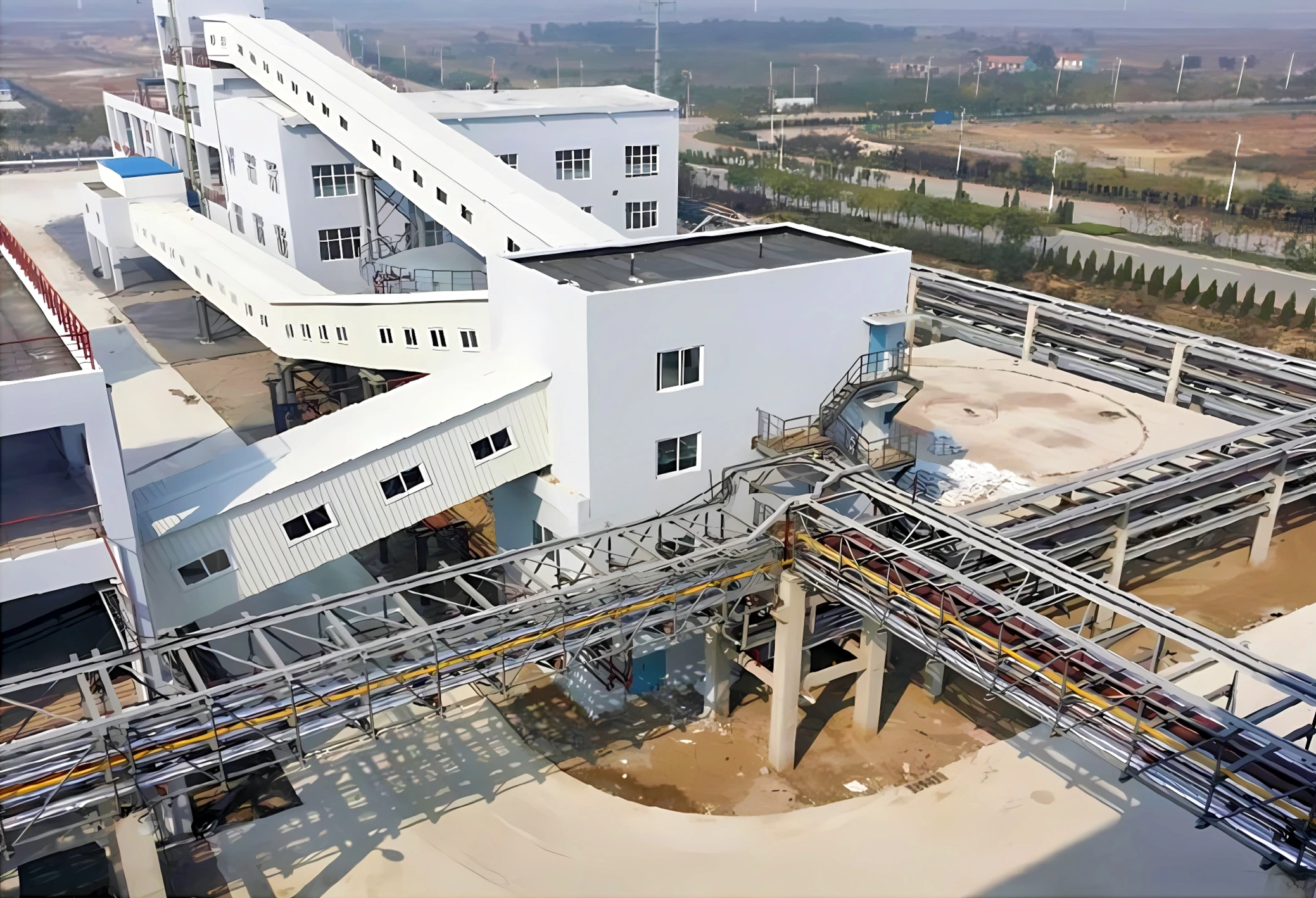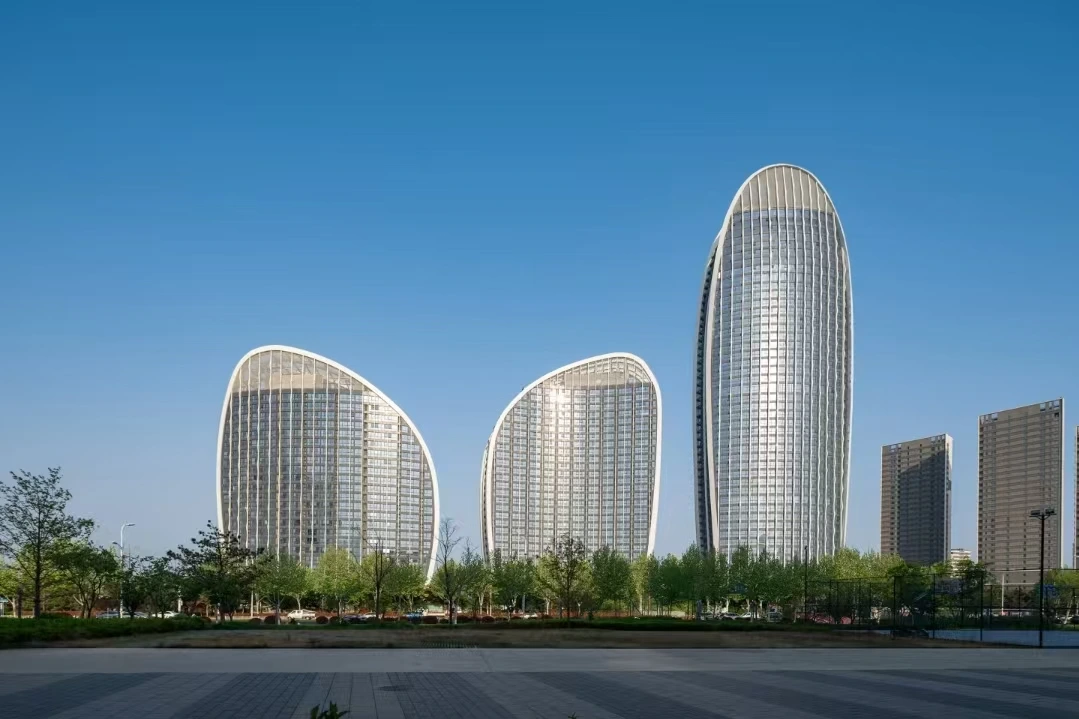Qingdao Langfu FIBC Project
Providing large-span space for the production, processing and storage of flexible intermediate bulk containers, helping enterprises expand production capacity. After completion, it will increase annual output value by 400 million yuan, driving employment and industrial chain development.

Large-span Production Space | Efficient Production Enhancement
Project Overview
Qingdao Langfu Technology Co., Ltd. specializes in flexible intermediate bulk containers for bulk fluid packaging. To promote industrial upgrading, it invested in the FIBC project with a total investment of 350 million yuan, planning a construction area of 90,000 square meters. Construction started in December 2022, with production scheduled to begin in May 2024. Upon completion, it will become an intelligent fluid packaging production base.
Project Challenges and Solutions
Large-span Steel Structure Hoisting Challenges
Challenge: The project plans to cover a construction area of 90,000 square meters. The steel structure workshop needs to meet the requirements of large-span production space. Some areas have larger spans, with corresponding steel components being large in size and weight. During hoisting, problems such as insufficient stability and difficulty in precise alignment are prone to occur, and the safety risk of high-altitude operations is relatively high.
Solution: The construction team formulated a special hoisting plan, simulated the hoisting process through BIM technology, and accurately calculated the lifting point positions and stress conditions. Large-tonnage truck cranes and crawler cranes were used in cooperation. For super-large-span components, segmented hoisting and aerial docking methods were adopted, and temporary support systems were set up to ensure structural stability during hoisting. Before hoisting, operators received special training and safety technical disclosure, and complete high-altitude operation protection facilities were equipped to ensure hoisting accuracy and construction safety.
Difficulties in Steel Structure Welding Quality Control
Challenge: The connection of steel structure components in the project mostly relies on welding processes, with a large amount of welding work. Some key nodes have high welding requirements. The on-site welding environment is greatly affected by weather conditions (such as sea breeze and humidity in Qingdao area), which is prone to welding deformation, pores, cracks and other defects, affecting structural strength.
Solution: A professional welding team was established, and welders were required to work with certificates and pass pre-job practical assessments. Targeted welding procedure qualifications were formulated according to different steel component materials (such as Q235, Q345), specifying welding parameters (current, voltage, welding speed, etc.). Before welding, the component grooves were cleaned, and preheating treatment was adopted to reduce welding stress; during welding, windproof and rainproof sheds were equipped to avoid interference from environmental factors; non-destructive testing (such as ultrasonic flaw detection and ray detection) was carried out in a timely manner after welding, and any found defects were repaired immediately to ensure that the welding quality meets the design standards.
Balancing Installation Precision and Schedule
Challenge: The project includes multiple functional zones such as production workshops and warehouses. Steel structure installation needs to work with other processes such as civil engineering and mechanical and electrical engineering. Each area has high requirements for component installation accuracy (such as column verticality and roof beam elevation deviation need to be controlled within specifications), which may easily lead to schedule delays or substandard accuracy due to improper coordination of cross-construction.
Solution: A combination of factory prefabrication and on-site assembly was adopted to improve the prefabrication accuracy of steel components and reduce on-site processing. High-precision measuring instruments such as total stations and levels were used for real-time monitoring, and a 3D coordinate control system was established to recheck the accuracy of each installation process. An inter-professional coordination team was established to formulate detailed cross-operation plans, clarify the connection nodes and responsibility division of each process, and timely solve construction conflicts through daily meetings, accelerating the construction progress while ensuring installation accuracy.
Technical Highlights
- Full-process BIM technology empowerment: BIM technology enables full-process empowerment with 3D modeling to control errors, improving hoisting efficiency and accuracy, supporting super-large space installation.
- Customized innovation in welding technology: Customized welding processes with temperature control to reduce defects, real-time flaw detection ensures force safety of large-span structures.
- Prefabricated and assembled efficient construction: Prefabricated assembly construction with high-precision prefabrication and efficient assembly reduces losses and accelerates progress.
- Breakthrough in marine environment anti-corrosion technology: Three-level protection against marine environment corrosion with long-term salt spray resistance provides long-term protection for steel structures.
Related Success Cases

Qingdao Zhongrui Logistics Equipment Workshop
Advanced logistics equipment workshop with efficient production and strict quality control, national gold award

Qingdao Soda Industry Conveyor Belt Project
Efficient operation of conveyor belt project ensuring stable supply of raw materials

Qingdao World Trade Convention Center
50-meter long-span steel structure convention and exhibition center project

